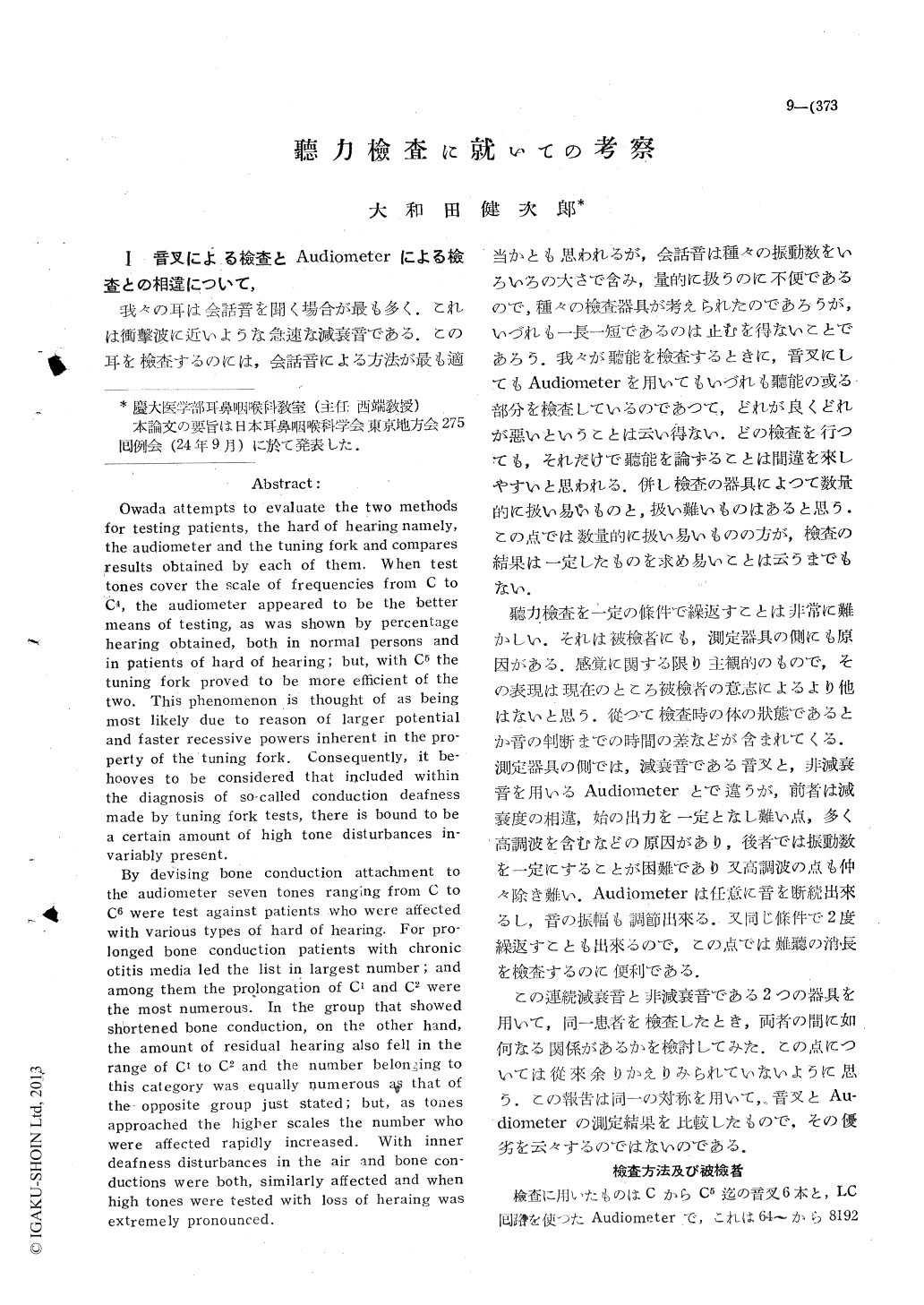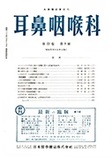- 有料閲覧
- 文献概要
- 1ページ目
Ⅰ音叉による檢査とAudiometerによる檢査との相違について,
我々の耳は会話音を聞く場合が最も多く.これは衝撃波に近いような急速な減衰音である.この耳を檢査するのには,会話音による方法が最も適当かとも思われるが,会話音は種々の振動数をいろいろの大さで含み,量的に扱うのに不便であるので,種々の檢査器具が考えられたのであろうが,いづれも一長一短であるのは止むを得ないことであろう.我々が聽能を檢査するときに,音叉にしてもAudiometerを用いてもいづれも聽能の或る部分を檢査しているのであつて,どれが良くどれが惡いということは云い得ない.どの檢査を行つても,それだけで聽能を論ずることは間違を來しやすいと思われる.併し檢査の器具によつて数量的に扱い易いものと,扱い難いものはあると思う.この点では数量的に扱い易いものの方が,檢査の結果は一定したものを求め易いことは云うまでもない.
聽力檢査を一定の條件で繰返すことは非常に難かしい.それは被檢者にも,測定器具の側にも原因がある.感覚に関する限り主観的のもので,その表現は現在のところ被檢者の意志によるより他はないと思う.從つて檢査時の体の状態であるとか音の判断までの時間の差などが含まれてくる.測定器具の側では,減衰音である音叉と,非減衰音を用いるAudiometerとで違うが,前者は減衰度の相違,始の出力を一定となし難い点,多く高調波を含むなどの原因があり,後者では振動数を一定にすることが困難であり又高調波の点も仲々除き難い.Audiometerは任意に音を断続出來るし,音の振幅も調節出來る.又同じ條件で2度繰返すことも出來るので,この点では難聽の消長を檢査するのに便利である.
Owada attempts to evaluate the two methods for testing patients, the hard of hearing namely, the audiometer and the tuning fork and compares results obtained by each of them. When test tones cover the scale of frequencies from C to C4, the audiometer appeared to be the better means of testing, as was shown by percentage hearing obtained, both in normal persons and in patients of hard of hearing; but, with C5 the tuning fork proved to be more efficient of the two. This phenomenon is thought of as being most likely due to reason of larger potential and faster recessive powers inherent in the pro-perty of the tuning fork. Consequently, it be-hooves to be considered that included within the diagnosis of so-called conduction deafness made by tuning fork tests, there is bound to be a certain amount of high tone disturbances in-variably present.
By devising bone conduction attachment to the audiometer seven tones ranging from C to C6 were test against patients who were affected with various types of hard of hearing. For pro-longed bone conduction patients with chronic otitis media led the list in largest number; and among them the prolongation of C1 and C2 were the most numerous. In the group that showed shbrtened bone conduction, on the other hand, the amount of residual hearing also fell in the range of C1 to C2 and the number belonging to this category was equally numerous as that of the opposite group just stated; but, as tones approached the higher scales the number who were affected rapidly increased. With inner deafness disturbances in the air and bone con-ductions were both, similarly affected and when high tones were tested with loss of heraing was extremely pronounced.

Copyright © 1950, Igaku-Shoin Ltd. All rights reserved.


